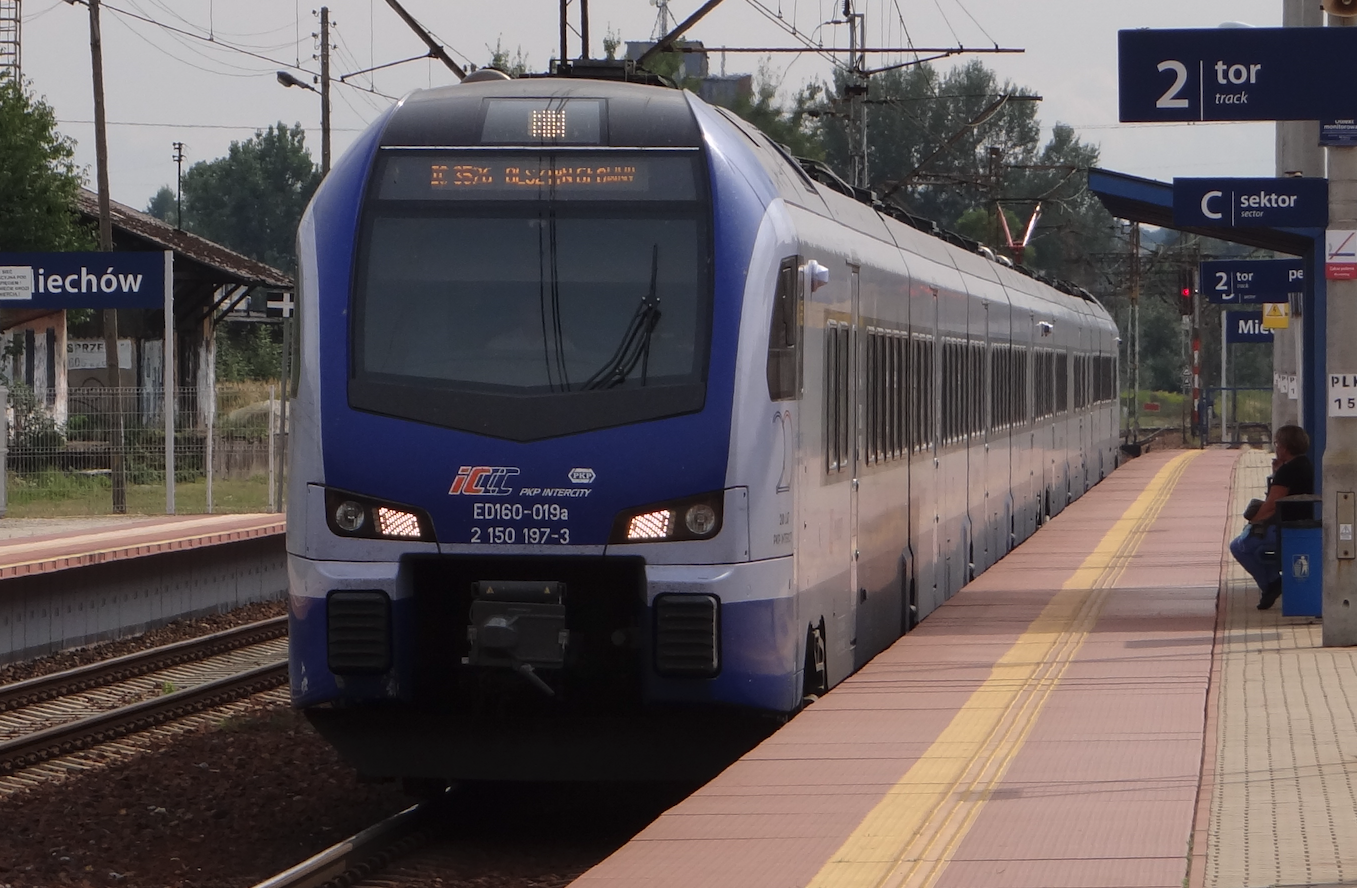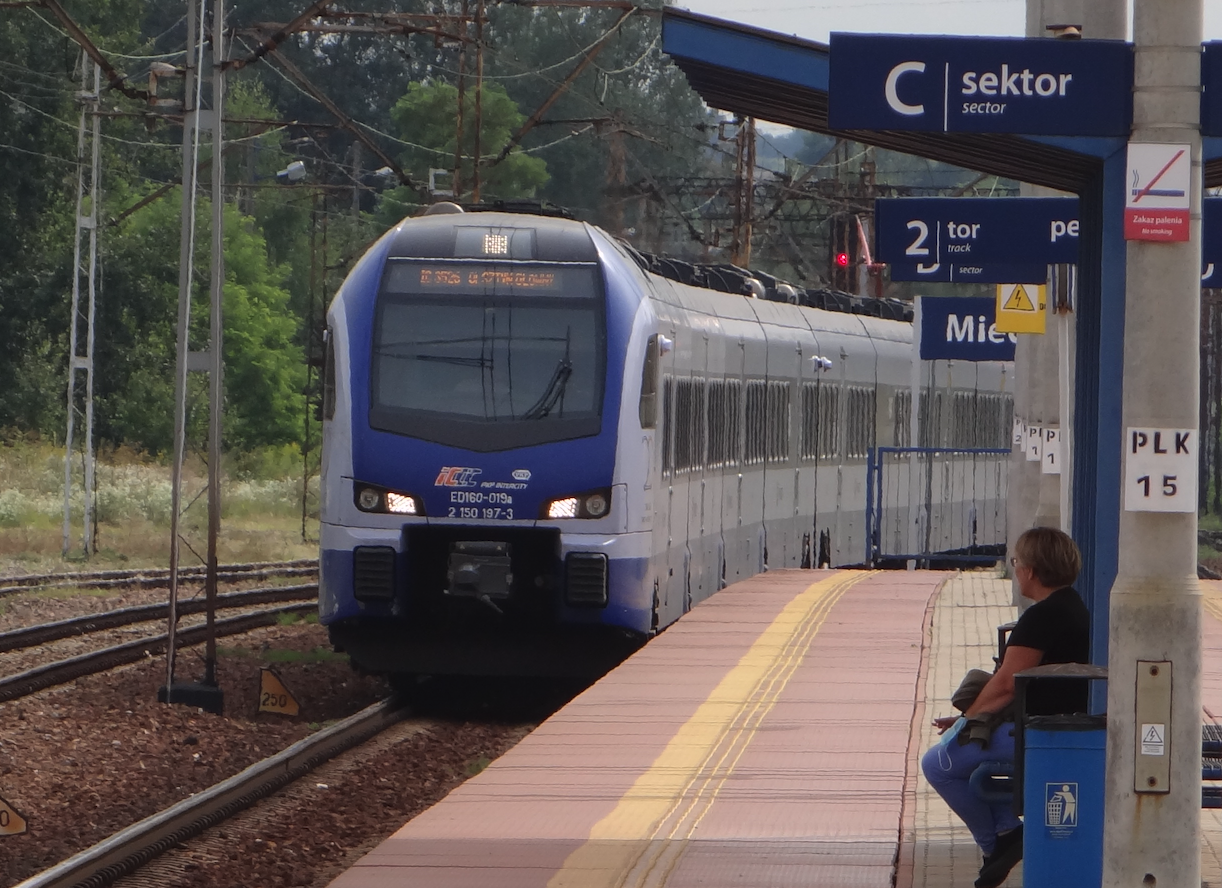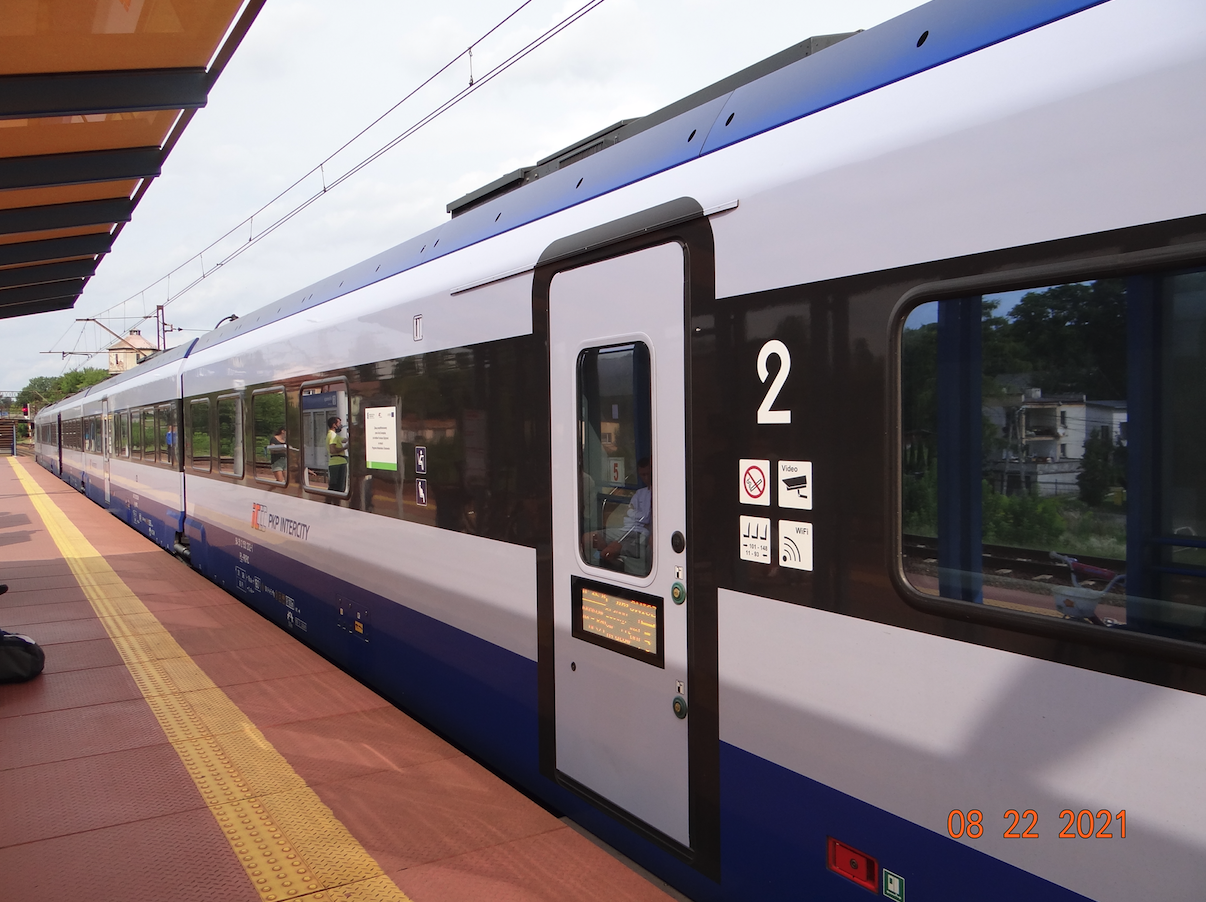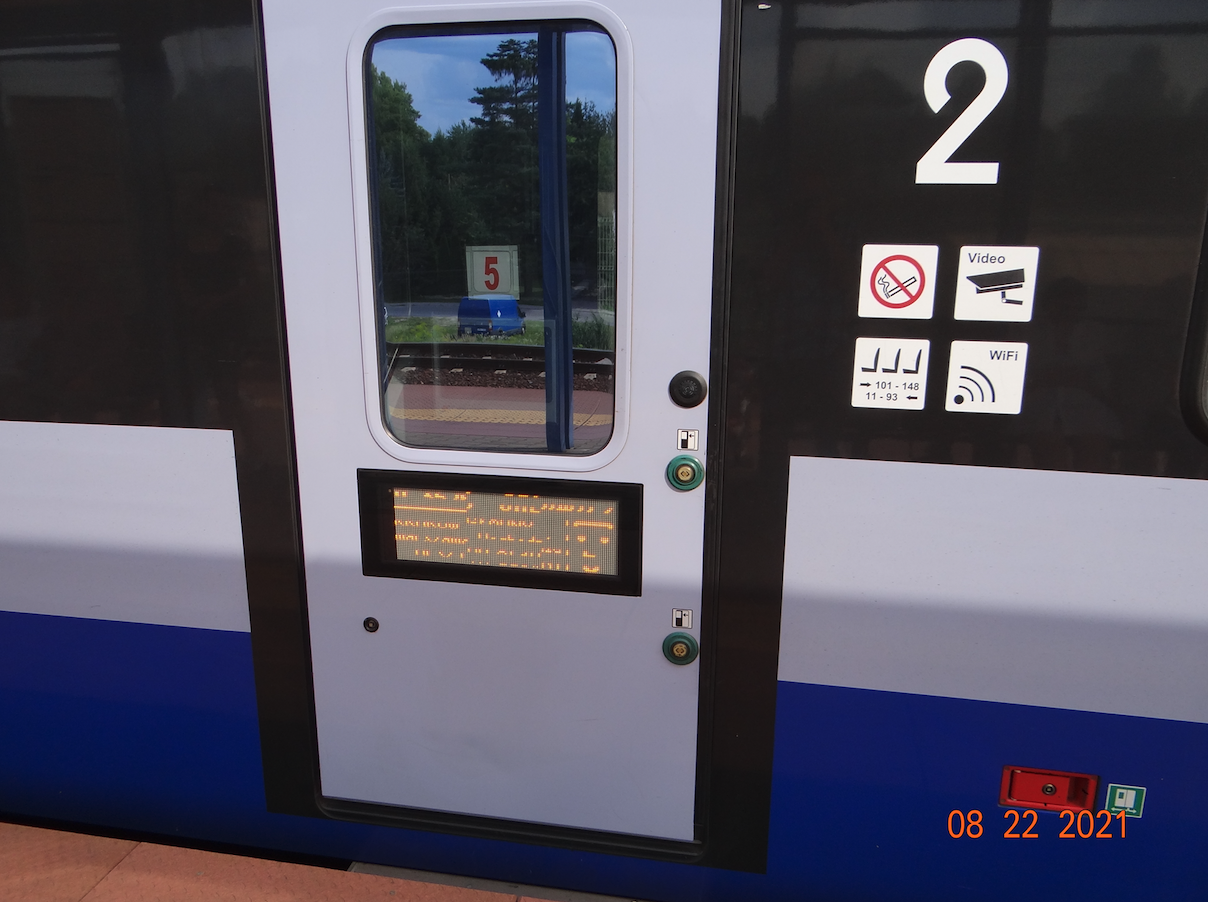Miechów 2021-11-06
EZT ED160 typu FLIRT Stadler Polska.
PKP InterCity.

On November 18, 2013, PKP InterCity (TLK at that time) ordered from Stadler Polska (Switzerland) and Newag (Poland) 20 electric multiple units of FLIRT type, intended for long-distance traffic. InterCity was scheduled to connect the cities of Warsaw, Krakow, Katowice, Olsztyn, Gdańsk, Gdynia and Szczecin. The traffic was to be led along other routes than the InterCity Premium ED250 "Pendolino" trains. The contract was worth PLN 1.156 million gross. The contract provides for the service of trains for a period of 15 years. The name FLIRT stands for Fast Light Innovative Regional Train, which is a fast, light, innovative, regional train.
The vehicles were delivered on time and put into service in December 2015. The trains were designed for speeds of 160 km / h. EMU FLIRT ED160 series was built as a 1st and 2nd Class train and is accessible for disabled people. There is a bar car inside. There is air conditioning, comfortable seats, full information for travelers, toilets in a closed system. In theory, the train offered a higher travel comfort than classic passenger carriages, for the same ticket price.
The ED160 trains were built at the Stadler Polska plants in Siedlce and are serviced here. Newag provided, among other things, a complete passenger information and monitoring system as well as some components and parts. The trains were built in 2015.
ED160 trains started to run on December 13, 2015. The trains were directed to the following routes: Kraków - Kielce - Warsaw - Olsztyn, Kraków - Łódź - Poznań - Szczecin, Warsaw - Bydgoszcz, Kraków - Łódź - Bydgoszcz and Gdynia - Bydgoszcz - Łódź - Częstochowa - Katowice.
In 2019, InterCity ordered another 12 ED160 FLIRT trains. The contract value was PLN 1.050 million. At the beginning of 2021, their tests began. During the tests, the trains received the designation of the ED150 series. It was similar with the first 20 ED160 trains. In March 2021, the last of the 12 trains was built. The trains are marked from ED160-021 to ED160-032.




Construction ED160.
The ED160 train consists of 8-car sets, non-compartmental. In the interior there are 60 1st Class seats in a 2 + 1 arrangement with a central aisle. In the 2nd class there are 294 2 + 2 seats with a passage in the middle. There are 8 seats for consumers in the bar car. Additionally, there are 6 foldable seats in the train. The InterCity train FLIRT sells only tickets with seats, but Stadler Polska provides standing places on the train. The entire train station of the EMU ED160 is 152.90 m long.
The structure of each car is made of closed profiles, made of aluminum alloys, welded with the use of automatic welding machines. There is one pair of doors leading to each car, which are single-leaf, automatic, and swing-sliding. The width of the entrance is 0.94 m. Inside the car there are internal doors which divide the carriages into zones. The interior is quiet and the shock absorption of the train is very good. Throughout the length of the train, the floor is level, without any steps, at a height of 1.18 m from the top of the rail. The train is air-conditioned. There is complete information for travelers. Passengers have six toilets in a closed system at their disposal. The passenger seats are individual with blue upholstery. The seats have individual additional lighting. Passengers have 230 V sockets and wireless internet at their disposal. Each car has windows made of smoky glass. Windows are mounted in rubber profiles. The windows have small openings for emergency ventilation.
The first and second carriages are intended for 1st Class passengers. The first car also has a place for bicycles, skis and prams. Additionally, the second car has a service compartment and service rooms for the train service. There is a shower and a toilet for the staff. The second car has a bar and a space for disabled passengers. There is a toilet for disabled people. The next five cars are Class 2. The length of the wagons varies. The first and eighth carriages are the longest. In these carriages, apart from the mechanics' cabins, there is a large electronics compartment. The fourth and fifth carriages are of medium length. The second, third, sixth and seventh carriages are the shortest.
The train has ten carts. The six bogies are Jacobs type rolling machines. Jacobs strollers have air suspension. Two carriages are driving. These are the first and tenth carriages. Each of the bogies has two motors with a power of 500 kW. The fifth and sixth bogies are traditional bogies.
There are automatic couplers at the beginning and end of the train. The train can move in multiple traction. Maximum two trains. Automatic couplers are used for this connection. The connection between the carriages is by means of Jacobs bogies, and the carriages in the train sets are connected with each other by spherical joints.
The train does not have exterior rear view mirrors. Instead, cameras are mounted, thanks to which the mechanic has a better view of the external image of the train.
A cooling fan is installed on the roof of each car, which is used to cool the elements of the propulsion equipment, the system of network chokes, water cooler of the rectifier and traction motors. There is also one air-conditioner for passenger compartments on each car.
Data T-T ED160:
Bo'2'2'2'2 '+ 2'2'2'2'Bo' axle system. Track gauge 1,435 m. Train length 152.90 m. Width 2.82 m. Height 4.12 m. Diameter of all wheels 0.92 m. Service weight 257,000 kg. Three-phase asynchronous driving motors with a power of 4 x 500 kW. 3 kV DC traction. Acceleration 0.6 m / s2. Design speed 160 km / h.
Written by Karol Placha Hetman
